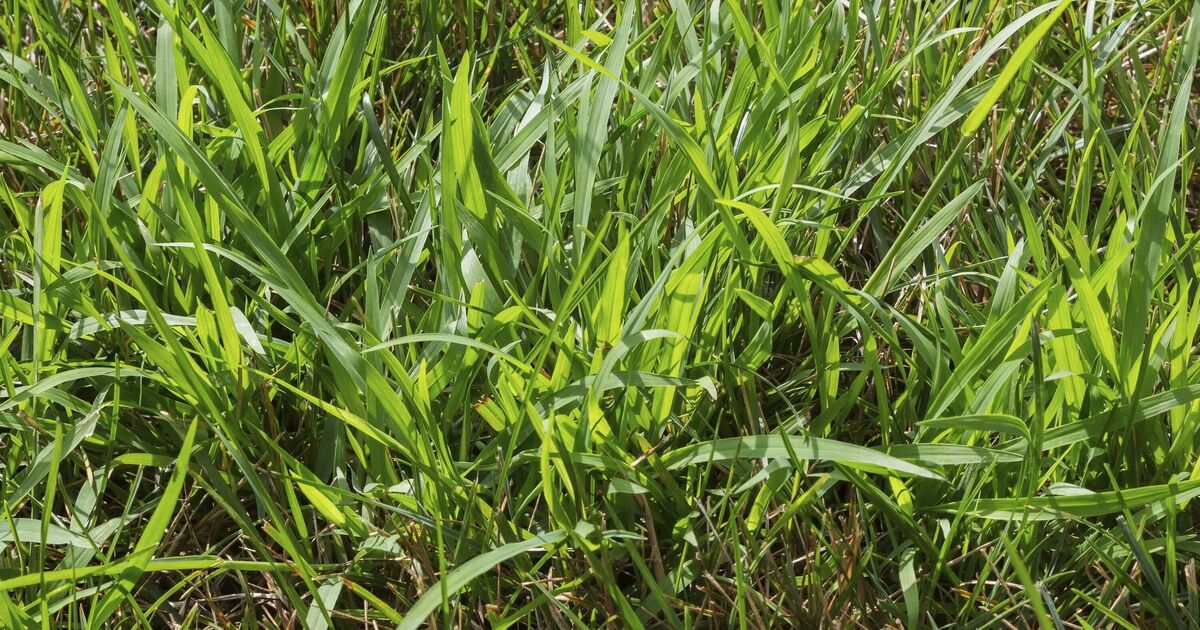Many gardeners avoid crabgrass despite its modest benefits, such as providing wildlife habitat and serving as temporary ground cover. Its rapid growth and unsightly clumps can quickly overshadow healthy turf; crabgrass germinates in warm, dry conditions and can produce up to 150,000 seeds per plant.
While it often dies back after frosty periods, this results in bare patches that ruin the appearance of a lush lawn. Clint Waltz, PhD, turfgrass extension specialist at the University of Georgia, has urged lawn-focused gardeners to consider tackling this grassy weed sooner rather than later. He said: “It’s a prolific seed producer. If you do nothing about it this year, expect a higher and more dense population of crabgrass next year.”
Crabgrass emerges in spring and germinates throughout summer. As an annual, it dies after the first frost, but seeds remain viable for years, ready to sprout the next season.
Chemical solutions may be the first thought for gardeners in a hurry, but eliminating crabgrass with herbicide can be a lottery, warned Clint.
Herbicides are grass-specific, so using the wrong one on your lawn may harm it. That’s why you should always determine the type of grass growing in your garden before turning to chemical weed killer.
You could try boiling water or horticultural vinegar to kill crabgrass, but, as these are non-selective, they may damage desirable grass, too.
How to get rid of crabgrass
Speaking to Southern Living, Clint advised that post-emergence herbicides are the most effective remedy if you choose the right one.
1. Find the right herbicide
Fluazifop can be used on tall fescue and zoysia grass varieties; meanwhile, Quinclorac can be used on tall fescue, zoysia, and Kentucky blue – also known as “smooth stalked meadow grass”.
2. Spot treat crabgrass patches
When you find the right product for your grass type, spot-spray the liquid on the crabgrass. Oftentimes, results show in about seven to 10 days, with the crabgrass turning yellow and brown.
Clint says that if you still have healthy-looking crabgrass after 21 days, you may need a second application.
For extensive infestations, apply the correct herbicide spray across the whole lawn as per product instructions. This applies if 50 to 70% of your lawn is covered with crabgrass.
3. Mow your lawn
A few days after herbicide application, mow your lawn to conceal the discoloured areas.
4. Hand-weed strays
If you’re not keen on herbicides, you may prefer to dig up crabgrass by hand, but this may only be effective if you have a few plants scattered about rather than a covered lawn. It’s also worth doing after treating and mowing the lawn to check for stray weeds.
5. Prevent crabgrass from returning
As with most garden weeds, prevention is the best remedy. A healthy lawn that’s mowed to the correct height and is well-fed and well-watered is a good start.
Beyond this, Clint says it is worth applying a pre-emergence product in spring. Do this in early to mid-spring while the surface soil temperature is below 12C.

